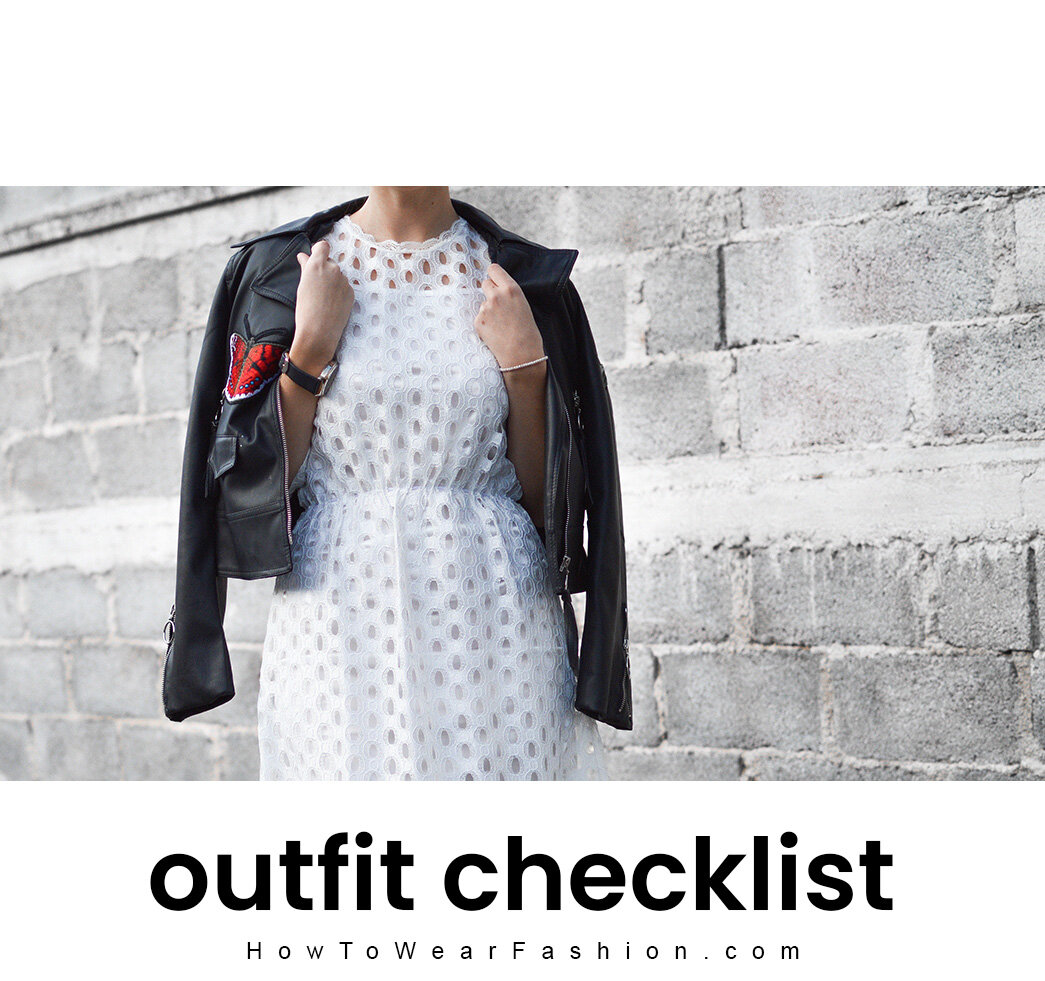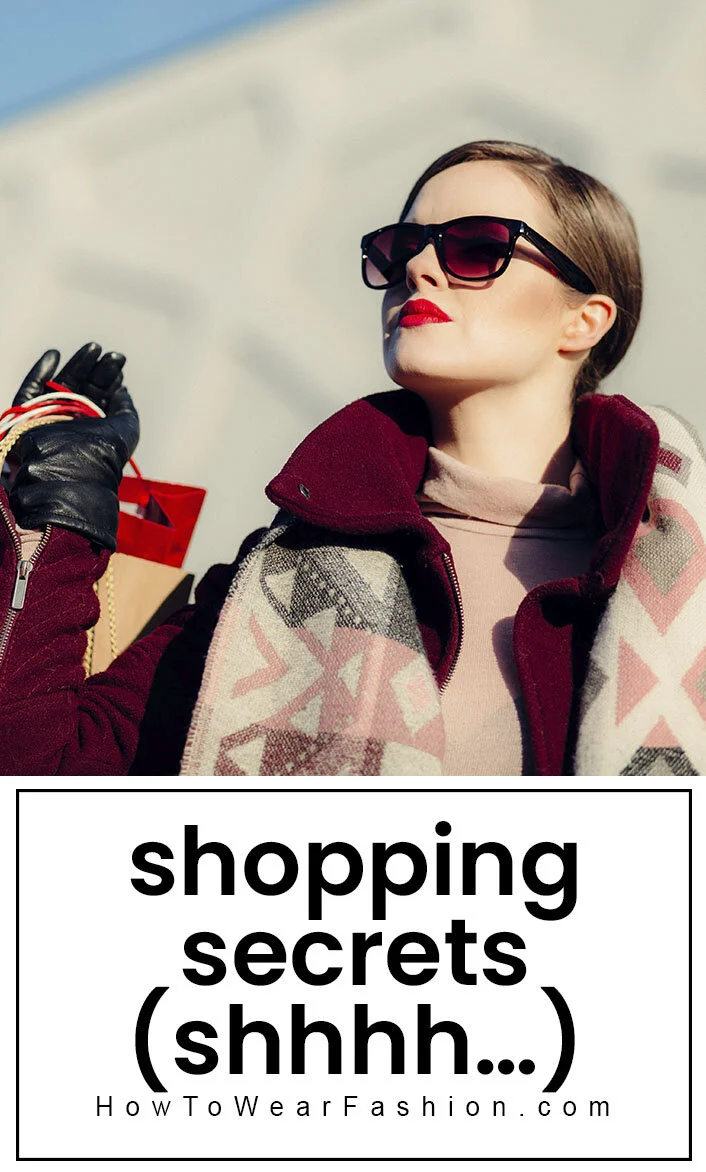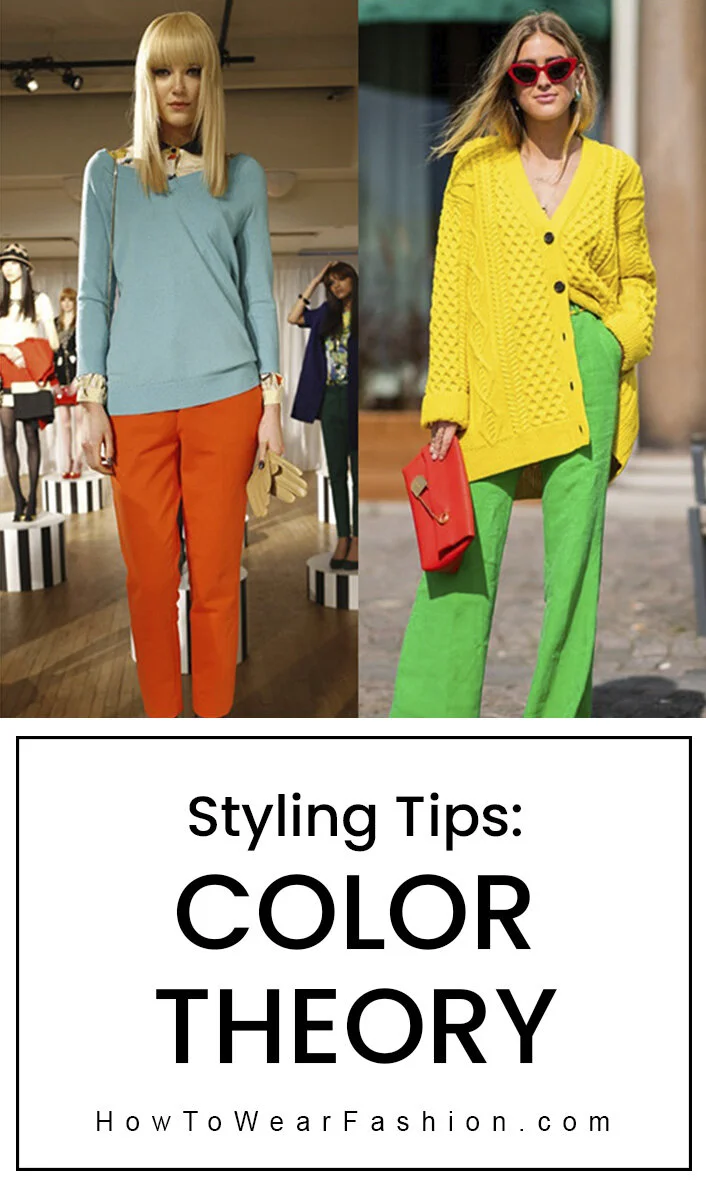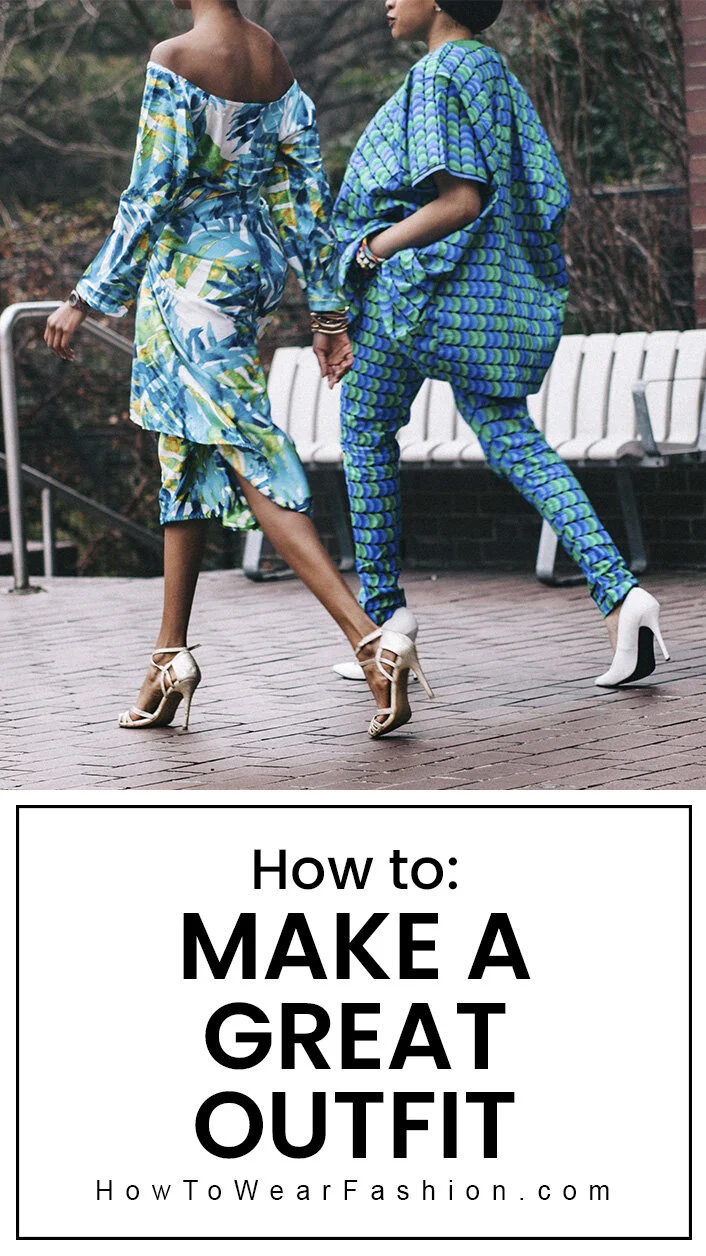Outfit checklist
A lot of women want to know how to make great outfits that “pop.” You want to know what colors work together, what cuts, what looks good on you, and what's appropriate for different activities. This is learnable! Everything about creating a great outfit is about balance — balance of interest, balance of color, balance of cuts, balance of texture, balance of level of dressiness, and balance of accessories. Let’s run through the key points that you can ask yourself with every outfit. You'll get better at doing this intuitively and you won't need to use the list forever, but at first keep this list handy to review.
Use a wide, full-length mirror! It’s surprising how many women rely on narrow little mirrors. You need a mirror at least 2- or 3-feet wide, and it has to be full-length. You can’t get a full grasp of the way you look and how your outfits look without this.
Balance of Interest
Each outfit needs some interest in it. Interest comes from using one these elements: color, pattern, texture, or shine.
Pair an interest item with something that is simple. Usually the more interest an item has, the simpler what you pair with it should be. A simple white tank tucked into a printed maxi skirt, for example.
Have an overall simplicity in your outfit! It’s what makes it chic and keeps the eye on you (instead of what’s going on with your outfit). In other words, do not have too much going on in an outfit — do not have too much color, pattern, texture, or shine.
2. Balance of Color
Keep the colors in an outfit usually to no more than 2 or 3. At most 4.
Repeat a color that is same or similar to your hair color. If you don’t include one in your outfit, then use less colors in your outfit overall (limit to only 1 or 2). That way your hair color counts as another color. If you use too many colors in your outfit with your hair color on top of that, you’ll look like there’s too much going on and your outfit won’t look visually connected to you. Because of this principle of repeating your hair color, you’ll find that your most useful, most worn items are those in colors like your hair color. They tie other shades to you — to your coloring!
3. Balance of Cuts
Complement looser, billowing pieces with tighter, body-conscious items.
Show skin strategically by choosing one body part to show off — cleavage OR legs OR arms, etc.
How “exposed” you are needs to be balanced, both visually to others and also in how you feel. For example, short shorts feel much more wearable and comfy when worn with a full coverage top and shoes.
Consider the volume of the items in your outfit, and your hair. Don’t overdo the volume overall! For instance, wear a voluminous ball-like midi skirt with a fitted tucked-in top and a sleek updo like your hair in a high bun. If you’re wearing your hair down in waves with a jacket or blouse that adds volume, wear skinny jeans to counter-balance the upper portion of you!
4. Balance of Texture
Just like you do not want too many colors going on in an outfit, you do not want too many textures either. Be conscious of all the textures in your outfit to make sure there aren’t too many.
Think about combining contrasting textures — wear something delicate like lace or silk with something rugged like leather; something nubby like a tweed or a thick knit with something smooth like silk, jeans, or patent leather; or something crisp like a sharp button down shirt with something feminine like chiffon skirt.
5. Balance of Level of Dressiness
When making an outfit you should be making it for a specific activity category — weekend, lunch, work, dinner, elegant, or active.
Consider how different combinations of items affect the level of dressiness of an outfit. Some general rules to know are: pairing something with a T-shirt makes it more casual; pairing something with a blazer dresses it up and gives it structure.
6. Balance of Accessories
Coordinate the colors of your accessories (shoes, bag, jewelry, hat, etc.) with your clothes — use the principles of blend or pop! Either use a similar color to your clothes (blend) or a different/contrasting color to your clothes (pop).
You don’t necessarily need to keep all metals in your outfit the same — gold or silver. You can mix metals, just be conscious of which metals are in your outfit and see how they look together.
Many accessories have more than one color, that’s okay! Think about what the overall color something is and how that color goes with your outfit.
It’s often nice to coordinate the color of your shoes, bag or jewelry with the color of your hair and/or eyes. Tan shoes with blonde hair, or blue earrings with blue eyes, etc.
The level of dressiness of your accessories should all be about the same in your outfit. Casual bag with sneakers and baseball cap. Pumps with pearl necklace and structured ladylike handbag.
The style of your accessories should go together as well. Casual sandals with a hippie bag. Refined pumps with ladylike handbag and sleek hoop earrings. Studded boots with edgy jewelry.
When combining items hold them up together to see them next to each other. You need to physically see them together — don’t just imagine the combo in your head. You’ll notice even experienced stylists doing this. Either lay the items together to see if they look good together or try them on together. You need to see them side by side in order to know!




